(VOVWORLD) - “Eid al-Adha,” the "Sacrifice Feast," is the second Muslim holiday celebrated in Oman each year. The festival marks the end of the traditional pilgrimage season to Mecca. A large number of animals are slaughtered during the festival. No alcohol is served on the day of the festival or on the day before. In this week’s Cultural Rendezvous, Dr. Khalfan Hamed Alharrasi, an Assistant Professor at the University of Nizwa, will be with us to introduce “Eid al-Adha”, one of Oman’s most beautiful celebrations.
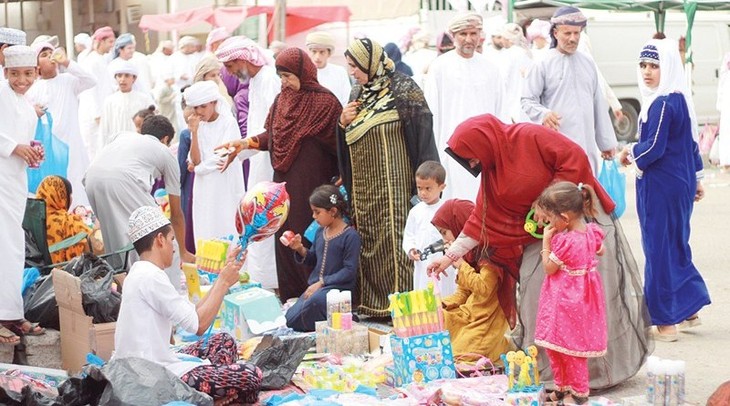
A festive mood is often found with citizens, residents and visitors during the Eid al Adha.
(Photo: omanobserver.om)
|
Bao Tram: Hi, Khalfan, welcome back to VOV’s Cultural Rendezvous to tell us about Oman.
Khalfan: Hello again. Today I would like to share with you one of the cultural and religious activities in Oman. It is a festival called Eid Al-Adha. This festival is celebrated by all Muslims around the world. However, I will describe it for you today from the context in Oman.
Bao Tram: Is it a public holiday? How did Eid Al-Adha get started?
Khalfan: Eid Al-Adha (in English: Festival of Sacrifice) is a religious festival that goes over 3 days. Oman celebrates Eid Al-Adha to remember the obedience of prophet Ibrahim to God - Allah. Prophet Ibrahim showed his obedience by his willingness to sacrifice his son Ismail, who was at the last moment replaced by Allah with a sheep, so that Prophet Ibrahim wouldn’t kill his son.
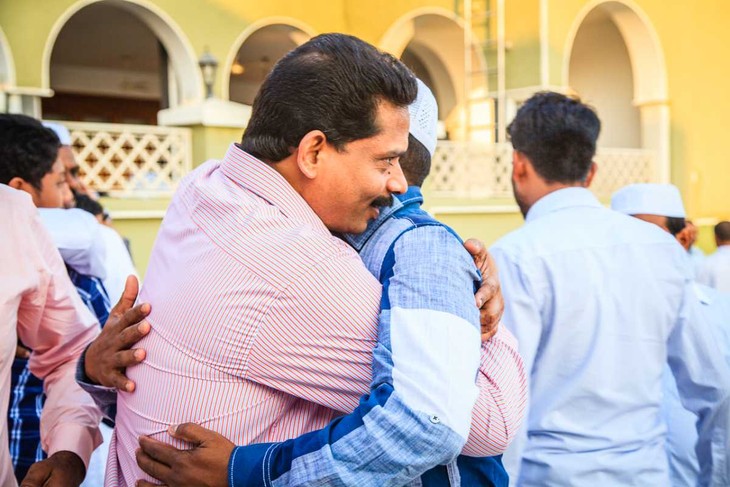
Merry greetings during Eid al Adha (Photo: holidify.com)
|
Bao Tram: When is Eid Al-Adha celebrated?
Khalfan: Eid Al-Adha is on the 10th day of the last month in the Islamic calendar. If you happen to be in Oman during Eid Al-Adha, you can greet people by saying “Eid Mubarak” (which means Blessed Festival) or you can say “Eid SaEid” (which means Happy Festival). If someone greets you at Eid Al-Adha, you can simply reply by using either phrase. You can reply by saying “Eid Mubarak” or “Eid SaEid”.
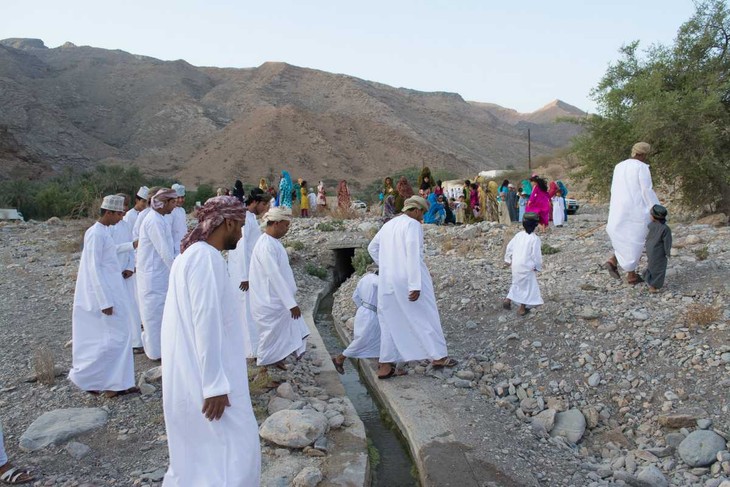 Devotees on the way to the prayer site (Photo: holidify.com) Devotees on the way to the prayer site (Photo: holidify.com) |
Bao Tram: What do people wear for the event?
Khalfan: How do people dress at Eid Al-Adha? On the first day of Eid Al-Adha, people dress up in brand new clothes. Men dress up in a brand new gown called a dishdasha. This is usually white, but other colors are possible. Men also wear a head cap called a kummah or a head turban called a massar. Women dress up in very colorful dresses and head scarfs, and they put beautiful henna designs on their hands.
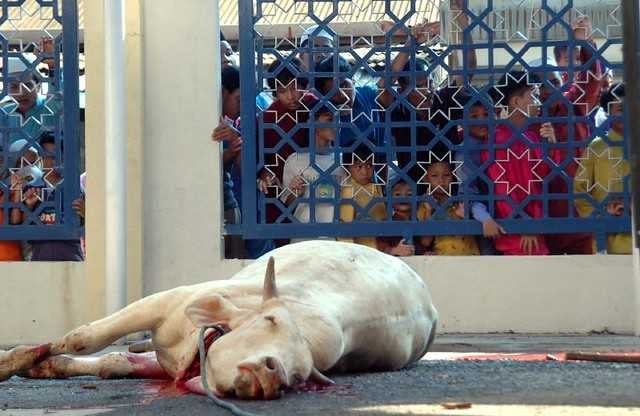
Animals are slaughtered during the festival (Photo: holidify.com)
|
Bao Tram: How is Eid Al-Adha celebrated?
Khalfan: So, what happens during these 3 days of Eid Al-Adha? Well, on the morning of day 1, there is a communal prayer. This is traditionally performed in an open-air space, between 6:30 am and 8 am. Because this is a festival of sacrifice, the Eid prayer is followed by slaughtering a goat, or a sheep, or a cow, or even a camel. (Again, this is remembering Prophet Ibrahim’s sacrifice.) Now you might be asking what happens to the meat of the sacrificed animal? Traditionally, one third of the sacrificed animal should be donated to the poor and needy people, while the rest is consumed by the family and relatives, so nothing is wasted or thrown away.
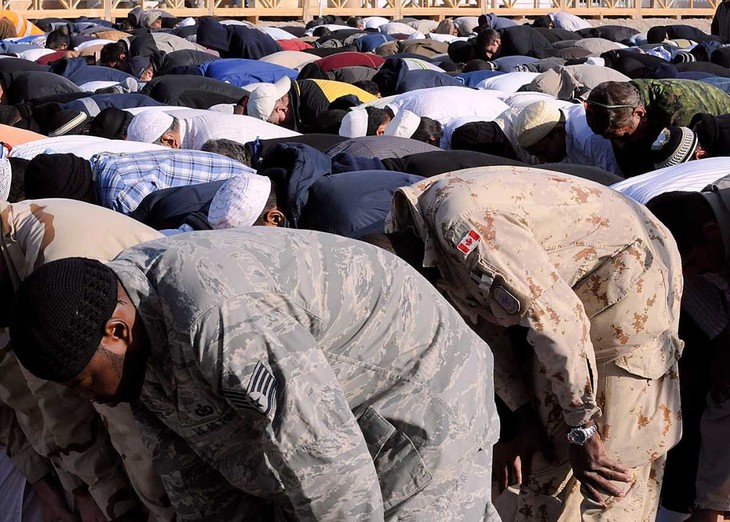 Devotees paying their rituals during the festival (Photo: holidify.com) Devotees paying their rituals during the festival (Photo: holidify.com)
|
Bao Tram: What else do Omani people do on this occasion?
Khalfan: During the 3 days of Eid Al-Adha, families and relatives visit each other in the morning or evening. There is a lot of dining out and shopping activities, especially shopping at traditional markets. Families cook big meals in different styles. Examples of these meals are Ursiyah (which is basically rice mashed together with meat or chicken). Another meal cooked usually on the 1st or 2nd day is shuwa, which means ‘underground grill’ and people also cook mashakeek, which is barbecue.
Last, but not least, for children, Eid is an exciting time because they receive money gifts from their family and relatives during family visits and gatherings. This money gift is called ‘Eidiyah’ and is usually between 1 and 3 USD given by the relatives. Of course, it could be a bit higher or lower than this.
So, if you are planning to visit Oman any time in the future, you may want to consider visiting at the time of Eid Al-Adha, so that you can experience a flavor of the culture of Oman.
Bao Tram: Thank you so much, Khalfan, for joining us today and sharing with us one of the grand festivities of Oman – the Eid al-Adha religious festival. I’m BT, the host of VOV’s Cultural Rendezvous.